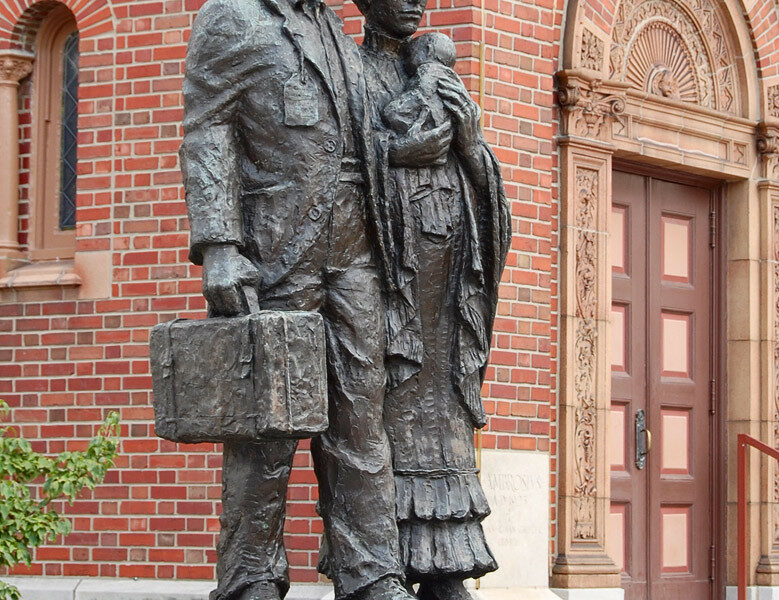Amid enduring turmoil in Hong Kong, the city of 7.5 million people is on the verge of a massive exodus. Over fears of restricted freedoms, survey data shows that up to 40% of residents are interested in emigrating. This means that, potentially, 3 million residents will leave Hong Kong over the next several years. St. Louis, a city that has fallen from its peak population of 857,000 in the 1950 census to just 300,000 as we approach the 2020 census, must actively recruit Hong Kong migrants to the city.
Last year, St. Louis Development Corporation released its Equitable Economic Development Strategy Framework. In this framework, the city laid out a number of goals to create a more equitable city that will experience growth for all of its residents over the next decade. One particular ambition of the framework is to not just stymie the population loss of the city that has been ongoing for 70 years, but to actively add 30,000 residents this decade. The plan lays out that the city will aim to provide better opportunity for Black residents and families with school-aged children, as these two groups have been leaving the city at alarming rates. St. Louis, by all estimates, has gained White, Asian, and Hispanic residents over the last decade. But the exodus of Black residents leaving struggling neighborhoods has far outweighed those gains. If the city is to see significant population growth, it will need to address and remediate the concerns and issues of its struggling communities.
In addition to this framework, St. Louis should also market itself as the best city for Hong Kong migrants. This is mutually beneficial for all parties involved. St. Louis is a large U.S. city with nearly 3 million people in its MSA. It is home to 9 Fortune 500 companies and boasts a stable and diversified economy. The food scene is among the best in the country and the cultural amenities are world class. But it needs more people in its urban core to rediscover its full potential. The city is already more dense than many of its rivals, but vacant lots dot the city’s street grid. Once vibrant commercial corridors in the city’s more distressed neighborhoods are struggling or completely dormant. To fix these issues takes people. Hong Kong migrants need a place to call home. And St. Louis needs more residents to reinvigorate the city.
If just one percent of Hong Kong residents looking to emigrate settled in St. Louis, the city would add 30,000 residents nearly overnight. There it is. The decade long goal of 30,000 residents is realized almost instantly! The Delmar Divide would likely be shattered as homes north of Delmar would provide new residents with the opportunity to be centrally located in affordable, beautiful housing. The construction boom that would ensue from both new construction and rehabs on the city’s north side would help to activate commercial corridors and solve the appraisal gap troubles that middle class Black homeowners have been dealing with for decades. More jobs would return to the north side with the influx in population and investment, too. The city would likely enter into a virtuous cycle with such an infusion of residents, and the sky would be the limit from there.
And there is precedent for welcoming refugees here. In the 1990s, Bosnian refugees came to St. Louis by the tens of thousands. Their contributions to the city have been invaluable and they have become an integral part of our community and identity as a city. Welcoming Hong Kong migrants can bring the same benefit to the city while providing a better life for Hong Kong migrants.
St. Louis is also currently better positioned than much of the country to welcome refugees. The superstar cities have become exorbitantly expensive over the last few decades and have become increasingly “full” as they refuse to upzone to accommodate population increases. St. Louis has open space and vacant homes that just need a little TLC. The Economist also recently wrote an article that the Midwest is “a region with outsized punch.” St. Louis fits this description well. Its bigger than it gets credit for and it has a wealth of untapped potential at the same time. Hong Kong migrants would benefit greatly from tapping into that opportunity. With available land for cheap and opportunity abound, it is a great city for people looking for a better life.
St. Louis has its challenges with this recruitment, however. The Federal Government has severely limited refugee resettlement, capping the total number for the nation at 18,000 for the fiscal year. With a new administration, it is quite possible this policy could change and the United States could once again become inviting to immigrants. St. Louis also has a very small (but strong) Asian community and requires connecting flights to reach Asia. Both of these make St. Louis less attractive than coastal cities, which currently have larger Asian communities and easier travel.
30,000 new residents bringing their culture, ambitions, and desire to build a better life would give St. Louis a jumpstart in what may be an exciting decade.

